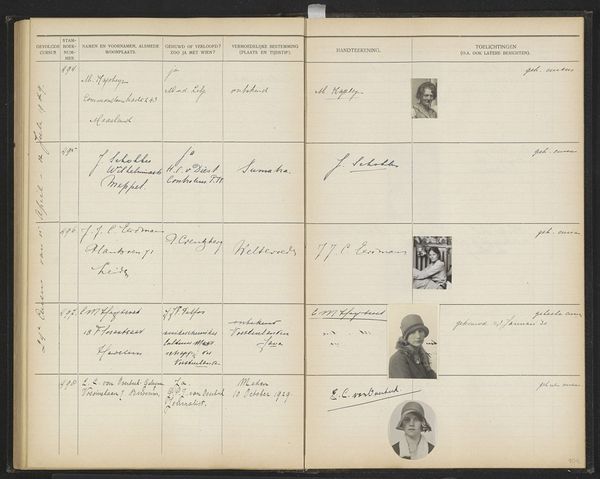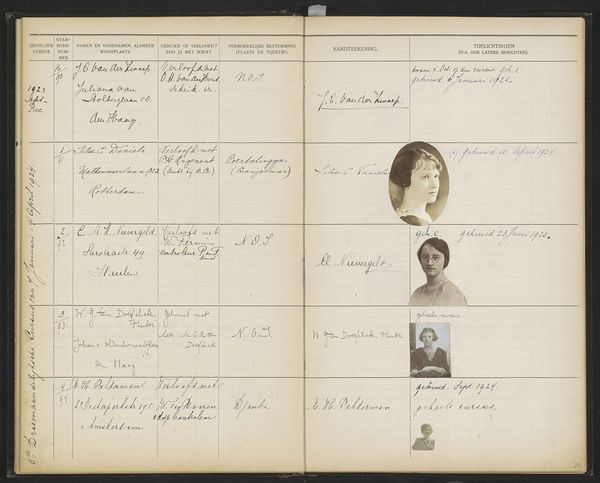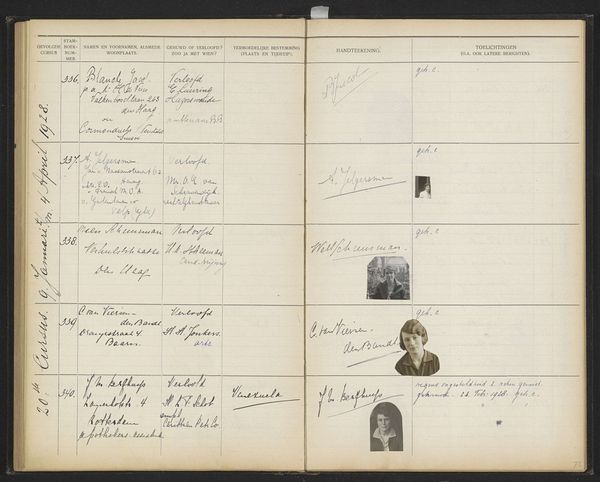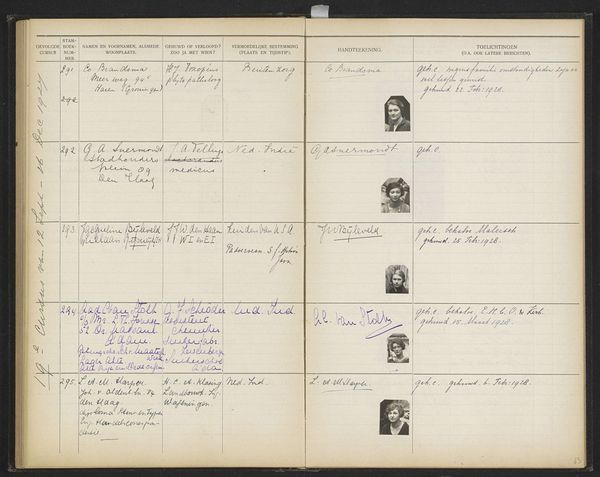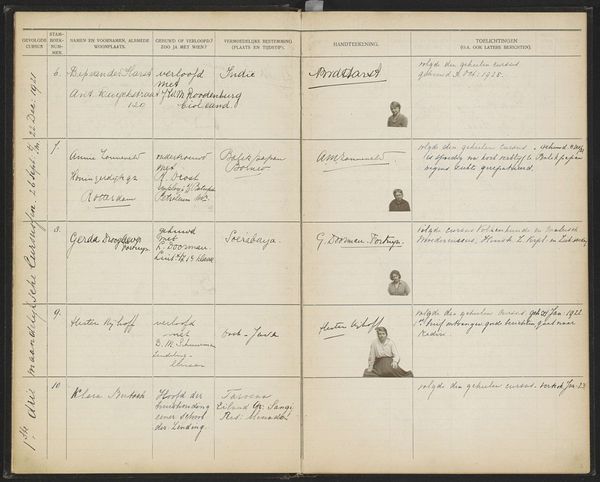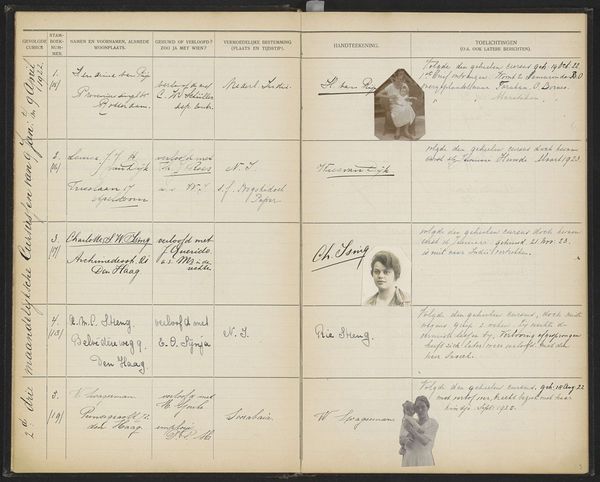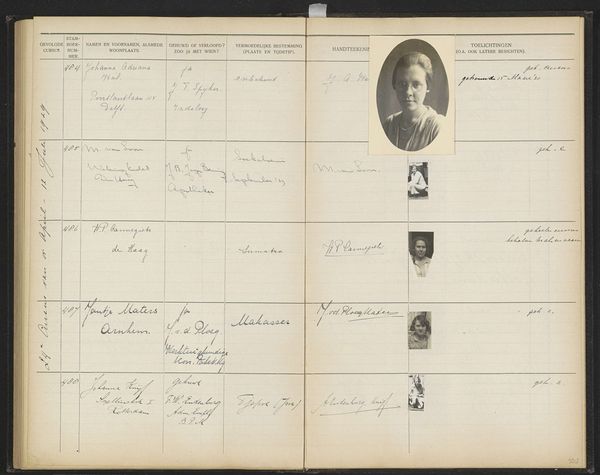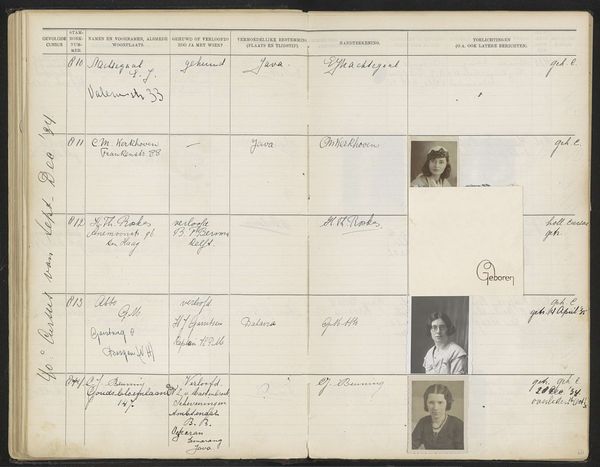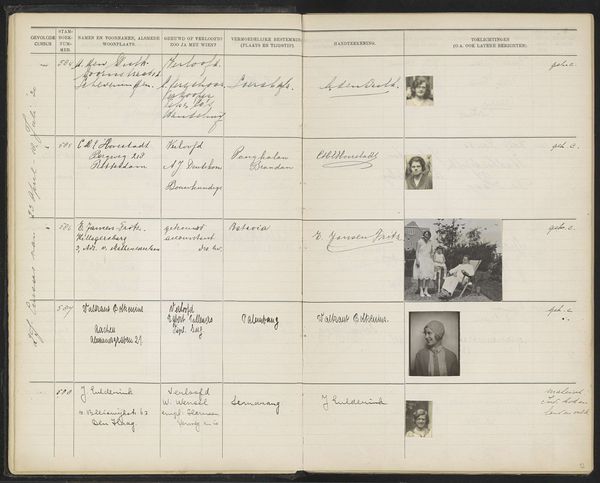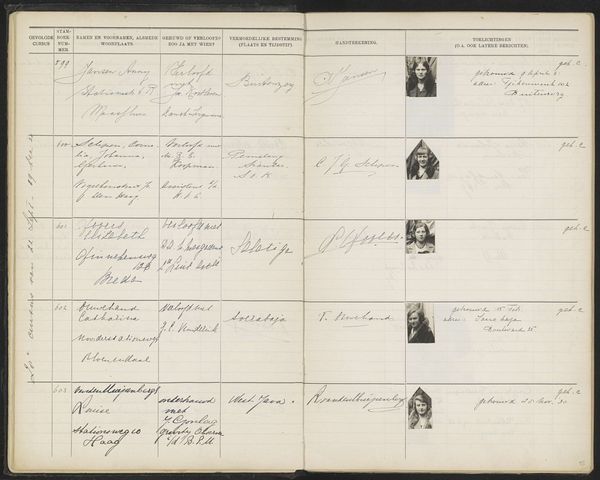
Blad 29 uit Stamboek van de leerlingen der Koloniale School voor Meisjes en Vrouwen te 's-Gravenhage deel I (1921-1929) Possibly 1925
0:00
0:00
collage, paper, photography
#
portrait
#
collage
#
paper
#
photography
#
history-painting
Dimensions: height 340 mm, width 440 mm
Copyright: Rijks Museum: Open Domain
Editor: This is page 29 from the "Stamboek van de leerlingen der Koloniale School voor Meisjes en Vrouwen te 's-Gravenhage," or Register of Students of the Colonial School for Girls and Women, from the 1920s. It seems to be a collage of photographs and handwriting on paper. It has a very official, yet intimate feel. What strikes you about this piece? Curator: Immediately, I see a complex interplay of identity and record-keeping. The book is a potent symbol of colonial administration, aiming to categorize and direct these young women. The photographs, however, offer a glimpse into individual stories. The handwriting adds another layer, literally the signatures and biographical annotations framing their aspirations within the system. The symbols become these women within a certain construct. Editor: That's fascinating! It's like the individuals are being defined by the institution, yet their portraits resist complete assimilation. The destinations noted -- Congo, Malang, other locations, what are those symbols of, would you say? Curator: They represent the destinations awaiting these women within the colonial project, their assigned roles in maintaining that project. Yet the individual photographs hold the gaze of a human being, existing both within and somewhat apart from this future colonial endeavor. Do you think these photographs allow us insight into their thoughts, as individuals, apart from what was planned for them? Editor: Maybe…they offer a space for imagining possibilities outside of that destiny. So the register itself, as a colonial artifact, is subverted, in part? Curator: Exactly! The register attempts to control their narratives, but their very visages hint at untapped potential, existing in the tension between control and self-determination. What did you observe that resonated with you, thinking about these themes? Editor: I initially focused on the faces, seeing them almost as a collective portrait, a testament to individual lives intersecting with larger historical forces. Curator: It shows how individual stories are both products of, and resistance against, larger systems of control and expectation. A fascinating, emotionally complex register indeed.
Comments
No comments
Be the first to comment and join the conversation on the ultimate creative platform.
